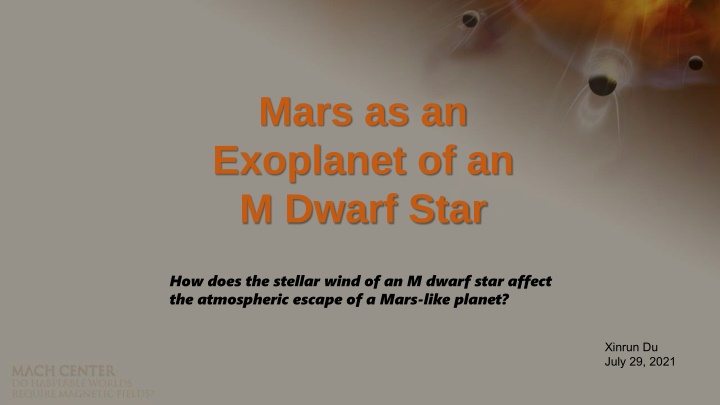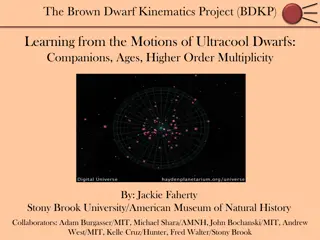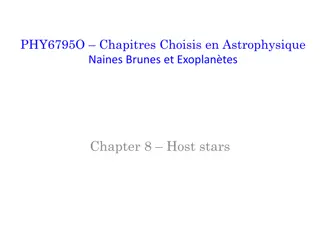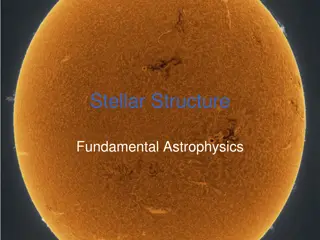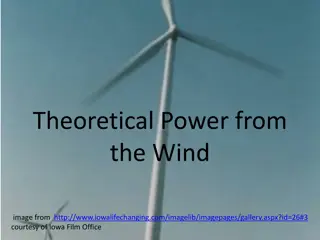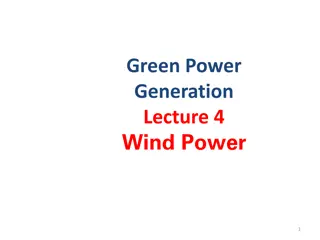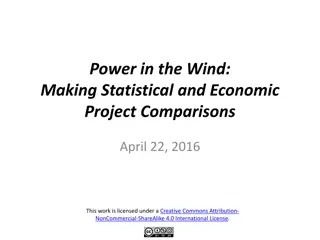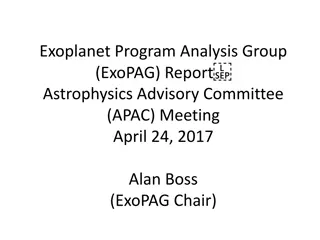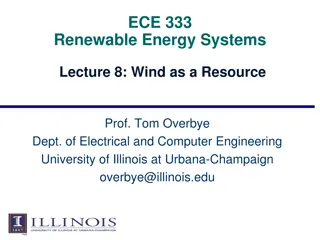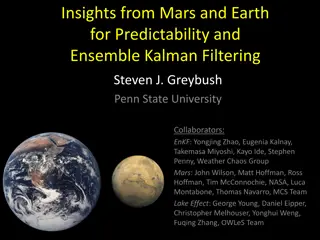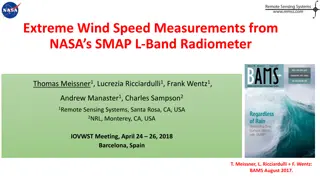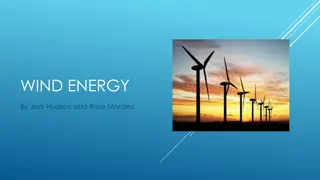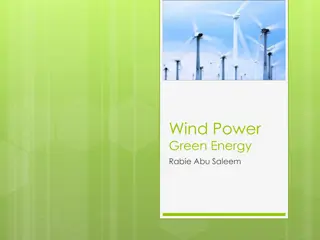Impact of M Dwarf Stellar Wind on Atmospheric Escape of a Mars-like Exoplanet
The study explores how the stellar wind from M dwarf stars affects the atmospheric escape of a Mars-like planet, focusing on the potential habitability of such exoplanets. Computer simulations utilizing stellar wind parameters provide insights into ion escape and the varying conditions at different distances from the star. The research includes comparisons with known M dwarf stars like TOI-700 and Trappist-1, highlighting the importance of stellar wind density, velocity, and IMF in understanding planetary atmospheres.
Download Presentation

Please find below an Image/Link to download the presentation.
The content on the website is provided AS IS for your information and personal use only. It may not be sold, licensed, or shared on other websites without obtaining consent from the author.If you encounter any issues during the download, it is possible that the publisher has removed the file from their server.
You are allowed to download the files provided on this website for personal or commercial use, subject to the condition that they are used lawfully. All files are the property of their respective owners.
The content on the website is provided AS IS for your information and personal use only. It may not be sold, licensed, or shared on other websites without obtaining consent from the author.
E N D
Presentation Transcript
Mars as an Exoplanet of an M Dwarf Star How does the stellar wind of an M dwarf star affect the atmospheric escape of a Mars-like planet? Xinrun Du July 29, 2021
M dwarf stars By far the most abundant type of stars in our galaxy (~70%). Star classification: M spectral type Much smaller & cooler than the Sun---long life span Habitable zone: 0.03-0.3 AU Much closer to the host star Habitable planets are more exposed to the stellar wind.
Mars Choice of potentially habitable planet due to similarity to Earth in the past Complex magnetization Atmospheric loss overtime has been studied a lot
Computer simulations Input stellar wind parameters from previous works Stellar wind density, velocity, and IMF EUV conditions Distance to the chosen exoplanet BATS-R-US (developed by University of Michigan) Solves variables from the equations included in MFPe model MFPe Multi-fluid Model (Ma et. al 2019) - Improvement on multi-fluid MHD (magnetohydrodynamics) model - Additional electron pressure equation
1. 2. 3. 4. 5. 6.
The stellar wind conditions at a specific location How ion escape varies with distance from the star
Log L_EUV = (29.12 +- 0.11) (1.24+-0.15) log [tau] Tau = age of the star in Gyr
TOI-700 & Trappist-1 Different types of M dwarfs (M2 & M8V) Relatively accurate stellar wind information
U and Ux;Uy B and Bx;By TOI-700 Wind Density (cm^-3) 96.8 Wind Velocity (km/s) (-650.4, 47.4, -7.4) IMF (nT) (-46.7, 2.9, -3.7) Trappist-1 Wind Density (cm^-3) 1950 Wind Velocity (km/s) (-636.7, 40, 2) IMF (nT) (-68.6, 6.2, -28) Sun (Ma et. al 2019) Wind Density (cm^-3) 4 Wind Velocity (km/s) (-400, 0, 0) IMF (nT) (-1.6, 2.5, 0)
Wind Density (cm^-3) 96.8 Wind Velocity (km/s) (-650.4,47.4,-7.4) IMF (nT) (-46.7,2.9,-3.7) TOI-700 U and Ux;Uy B and Bx;By Y
Wind Density (cm^-3) 1950 Wind Velocity (km/s) (-636.7,40,2) IMF (nT) (-68.6,6.2,-28) Trappist-1 U and Ux;Uy B and Bx;By Y
Wind Density (cm^-3) 4 Wind Velocity (km/s) (-400, 0, 0) IMF (nT) (-1.6, 2.5, 0.0) Sun (Ma et. al 2019) U and Ux;Uy B and Bx;By Y
Rho_p (planetary ion density)= [O2pRho]+[OpRho]+[CO2pRho] Flux = Rho_p* [Ux] Log10 (Rho_p) TOI-700 Wind Density (cm^-3) Wind Velocity (km/s) IMF (nT) 96.8 (-650.4, 47.4, -7.4) (-46.7, 2.9, -3.7) Trappist-1 Wind Density (cm^-3) Wind Velocity (km/s) IMF (nT) 1950 (-636.7, 40, 2) (-68.6, 6.2, -28)
O+ Ion escape rate (s^-1) - - - TOI-700 Trappist-1 O2+ CO2+ Iteration steps
Preliminary results, further analysis is needed. Future works - Cases so far use current Mars EUV conditions, continue working on determining proper photoionization rates. - More cases for other M dwarfs will be explored.
MACH Center - Dr. Yingjuan Ma - Dr. Laura Peticolas Boulder Solar REU
